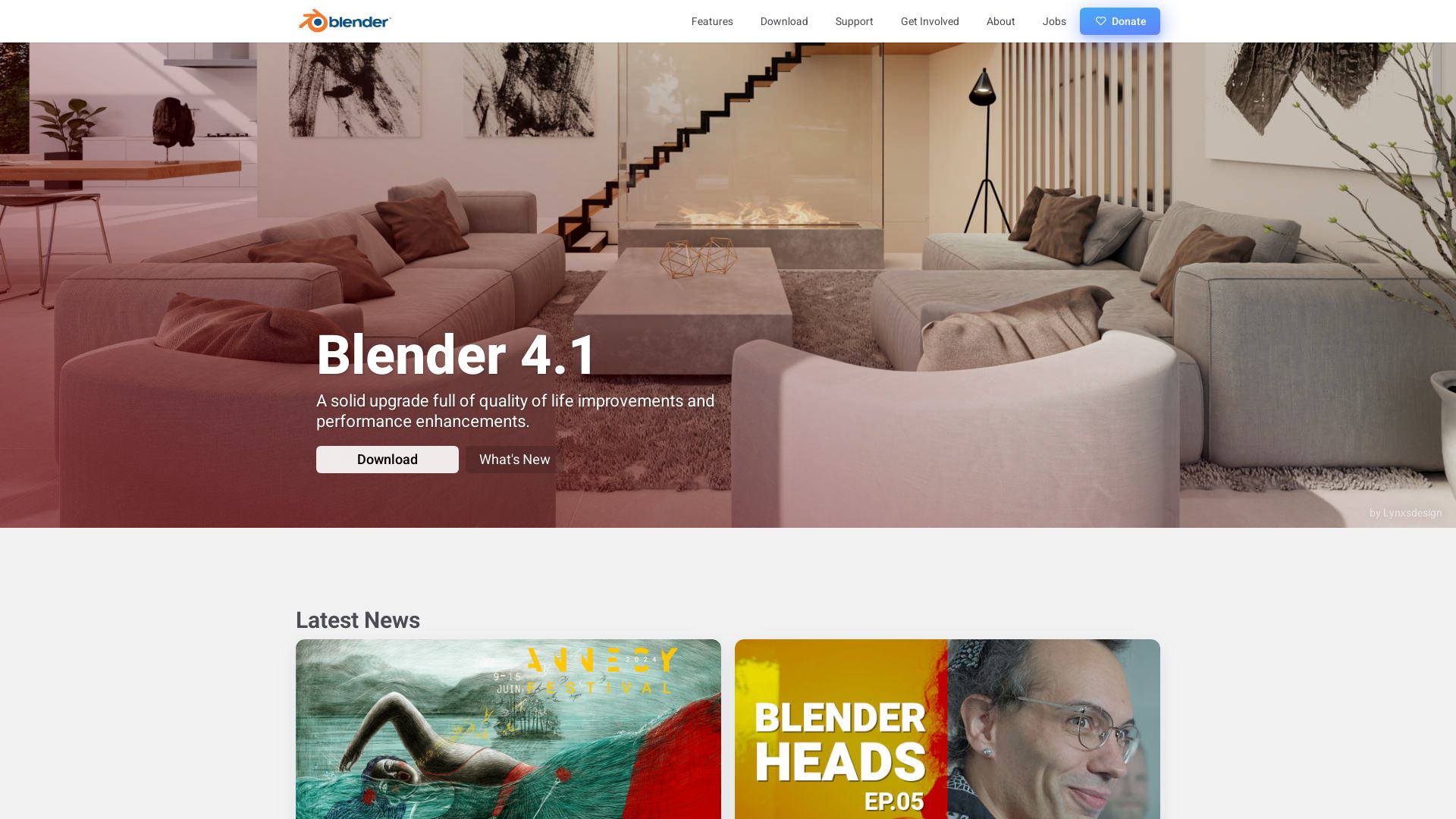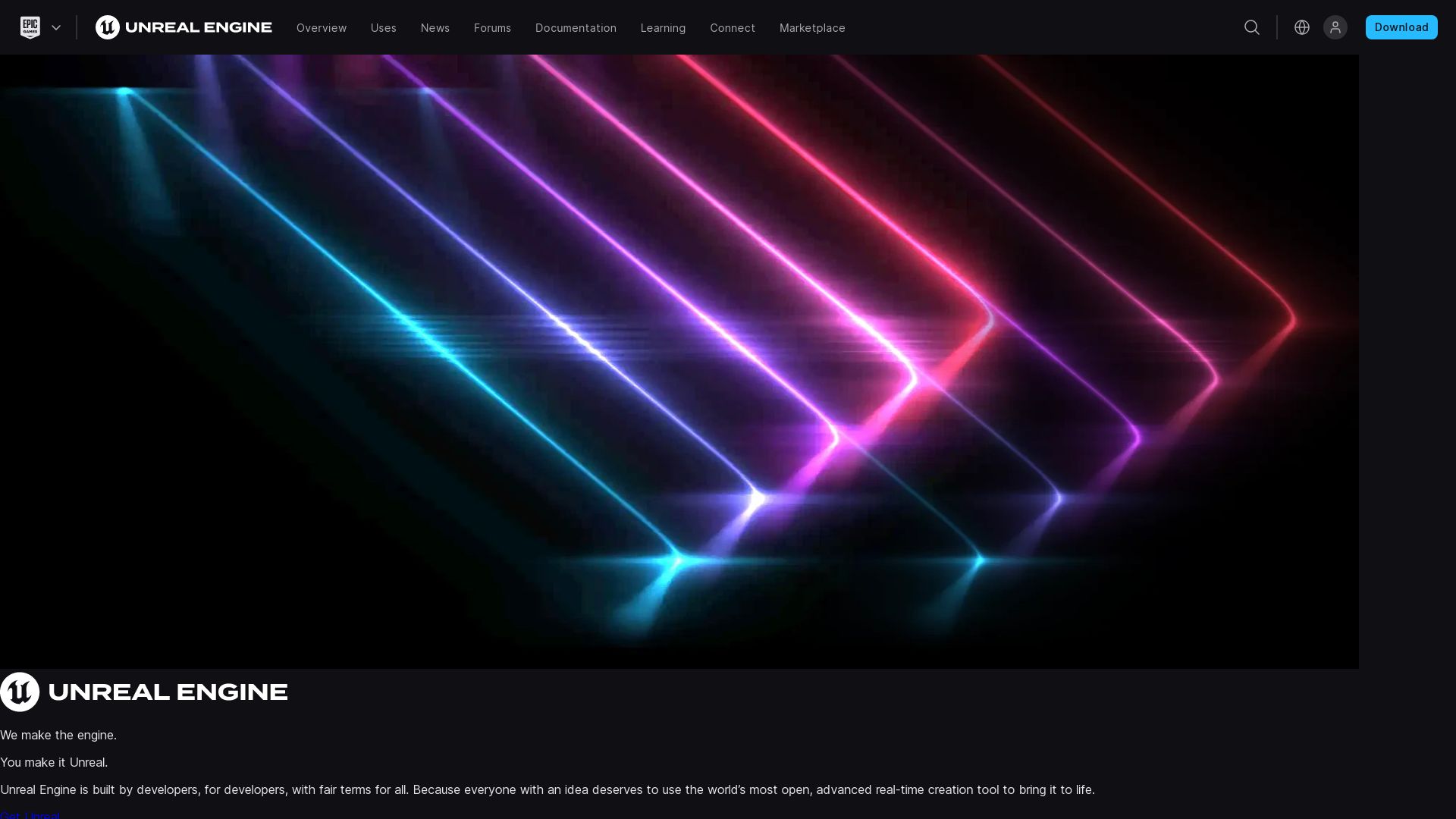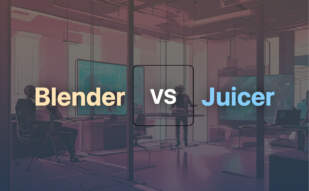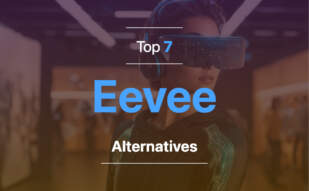Juicer specializes in extracting fresh juice through two main types of juicers: masticating and centrifugal. The Nama J2 Cold Press stands out as the top-performing model, offering high yield with minimal prep and a sleek design. On the other hand, the Omega H3000D Cold Press delivers great value and nutritious juice. For those seeking alternatives to Juicer, options include Blender, Substance Designer, Unity, Unreal Engine.

Blender

An open-source and free powerhouse, Blender is a comprehensive suite of tools designed for 3D computer graphics and interactive applications. Initially developed by Dutch animation studio NeoGeo, Blender boasts a 3-decade track record and an impressive set of features that cater to a broad range of applications, from visual effects to virtual reality.
Blender Top Features
- 3D Modelling: Create geometrically complex 3D printed models and motion graphics.
- Animation: Versatile functionality for animated films and art.
- Raster Graphics Editing: Paint directly onto 3D models, blending 3D and 2D artistry.
| UV Mapping: | Allows for seamless application of 2D textures onto 3D objects. |
| Fluid and Particle Simulation: | Produce photorealistic effects like smoke, fire, and water. |
| Digital Drawing: | Ideal for conceptualizing and creating 2D storyboards or assets. |
Blender Limitations
- Extensive array of functionalities can steepen learning curve.
- Blender Game Engine deprecated as of 2.8 release.
- Blender Internal render engine removed in favor of Eevee renderer from 2.80 release.
Blender Pricing
Blender is entirely free, making it an excellent tool for both industry professionals and hobbyists.
Blender Use Cases
Use Case 1 – Animated Film Production
Blender’s extensive feature set makes it an excellent tool for animated film production, with applications spanning character rigging to final rendering.
Use Case 2 – Virtual Reality
Whether you’re developing immersive experiences or prototyping VR interfaces, Blender’s VR compatibility can prove invaluable.
Use Case 3 – Visual Effects
Blender’s vast capabilities in 3D modelling, simulation, and compositing make it a strong choice for visual effects production.
Substance Designer
A brainchild of Adobe Systems, Substance Designer is a forerunner in material-authoring software. The perfect solution for creating meshes/materials, it’s a powerhouse tool used in high-profile video games such as Deathloop and Assassin’s Creed Valhalla.
Substance Designer Top Features
- New Spline and Path Tools: Version 13.0 introduces 25 new nodes for generating, transforming, and rendering splines. Moreover, 10 nodes are dedicated to generating paths from grayscale masks and converting them to splines.
- Updated Dot Node: The Dot node houses the new ‘portal’ functionality, allowing seamless data transfer without the need for wire connection.
- Substance Engine 9: It supports loop repetition within Substance Function Graphs for power-packed efficiency.
- Home Screen: The latest interface feature for quick access to tutorials and project settings.
| Feature | Benefit |
|---|---|
| Language Support | Native editions in French, Italian and Portuguese caters to a wider audience. |
| Spline Tools | Helps generate, manipulate 2D shapes efficiently. |
| Image Warping Control | Full control over pattern creation and pattern scattering. |
Substance Designer Limitations
- Discontinuation of procedural geometry toolset, model graphs have been removed completely.
- The software does require some bit of learning curve and can be complex for novices.
Substance Designer Pricing
Substance Designer can be acquired for $149.99 via Steam. There also exists a subscription model $19.99/month or $219.88/year through Adobe’s Substance 3D subscriptions.
Substance Designer Use Cases
Use case 1 – AAA Game Developers
Substance Designer stands as an indispensable tool for creating stunning textures compatible with any engine imported.
Use case 2 – Visual Effects studios
With its advanced customization options and the ability to integrate third-party plugins, VFX studios find Substance Designer immensely helpful.
Use case 3 – Indie Game Developers
Being directly compatible with Unreal Engine and offering free updates on Steam until end of 2023, Indie Game Developers have a tangible advantage using Substance Designer.
Unity

Having its genesis in 2005, Unity has excelled as a powerhouse for game development, offering unmatched potential in the creation of 3D and 2D games, not to mention its extensive use in Augmented Reality applications and 3D simulations. Compatible with multiple operating systems and platforms, Unity grants developers the versatility to create and launch games from Android to iOS and beyond.
Unity Top Features
- Facilitates cross-platform game development and launch.
- Comprehensive suite of tools, rendering tech, and features to support high-quality games.
- Robust Unity 3D offering varied coding languages such as BOO script, Javascript and C#.
- Dense asset store integrated with pre-designed textures for diverse game designs.
- Active developer community for collaboration, assistance, and feedback.
- Rigorous commitment to tech evolution enhancing user-friendliness, compatibility, and immersive visuals.
- Supports the creation of games with augmented reality/virtual reality (AR/VR) features.
| Feature | Benefit |
|---|---|
| Multiple Coding Languages | Offers development flexibility and versatility. |
| Unity Asset Store | Provides pre-designed textures aiding brainstorming and game design. |
| Active Developer Community | Facilitates problem-solving and system improvement feedback. |
Unity Limitations
- New pricing policies have incited objections from developers, particularly those of indie, mobile developers, and solo category.
- Fears of potential abuse of per-install fees and sudden pricing shifts compromising financial sustainability.
- Concerns about digital preservation efforts being hampered due to new Unity’s fees.
- Limitation of trust caused by unannounced changes.
Unity Pricing
Unity has undergone a major pricing shift. A per-install fee will be imposed every time a Unity-based game is installed, starting January 1, 2024. However, developers will be exempt from this fee until their game reaches $200,000 in revenue and surpasses 200,000 installations. Bear in mind, games bought in standard markets (US, UK) carry a higher install fee than those purchased in emerging markets (India, China).
Unity Use Cases
Use case 1: Cross-Platform Game Development
Developers aiming to produce games for multiple platforms find Unity an ideal choice, given its adaptability with various operating systems.
Use case 2: Augmented Reality Applications
Unity extends far beyond traditional game development, providing outstanding tools and features for crafting Augmented Reality applications.
Use case 3: Indie Game Development
Despite its pricing issues, Unity has a substantial asset library and a supportive community that makes it indispensable for indie game developers.
Unreal Engine

Step into the world of Unreal Engine (UE), a series of 3D computer graphics game engines that is now more than just for gaming. Developed by Epic Games, the legacy of UE is evident from its first showcase in 1998 with the game Unreal. It’s a tool that has made a mark in diverse genres and industries, even beyond gaming-like film and television.
Unreal Engine Top Features
- Multi-platform Support: Written in C++, UE supports an expansive range of platforms, from desktop and mobile, right down to console and virtual reality platforms.
- Level Editor: UE incorporates UnrealEd, a level editor with real-time constructive solid geometry operations.
- Free For Educational Institutions: Unreal Engine is free for schools and universities.
| Features | Benefits |
|---|---|
| Unreal Development Kit | Enhances the creation of iOS games and apps |
| Basic Project Templates | Offers starters for first-person or third-person experiences |
| Unreal Engine Marketplace | Facilitate selling own creations or purchasing others’ works |
Unreal Engine Limitations
- Royalty model may pose a challenge. For commercial use, Epic charges 5% of revenues over USD 1 million. However, this is waived for games on the Epic Games Store.
- The use of C++ as the programming language might pose a learning curve for some.
Unreal Engine Pricing
Epic takes a 5% cut for products that generate more than $3,000 per quarter. It is worth noting that developers selling through the Unreal Engine Marketplace enjoy a generous 88% share of the revenue generated.
Unreal Engine Use Cases
Use Case 1: Modders
The openness of Unreal Engine 3 made it a go-to tool for modders. The introduction of the Unreal Development Kit (UDK), a free version of UE3’s SDK in November 2009, brought about another wave of modding adventures.
Use Case 2: Content Creators
Content creators enjoy the Unreal Engine marketplace advantage, where selling creations becomes easy and profitable, considering that 88% revenue share. Additionally, the features from companies like Quixel incorporated into UE could boost their creations.
Use Case 3: Educators and Students
Learning and teaching with Unreal Engine became effortless with the free availability of the engine for schools and universities. Starting a project is simplified with basic project templates serving as points of origin for first or third-person experiences.
Tiffany Brise
Content writer @ Aircada, patiently awaiting a consumer AR headset that doesn’t suck.





